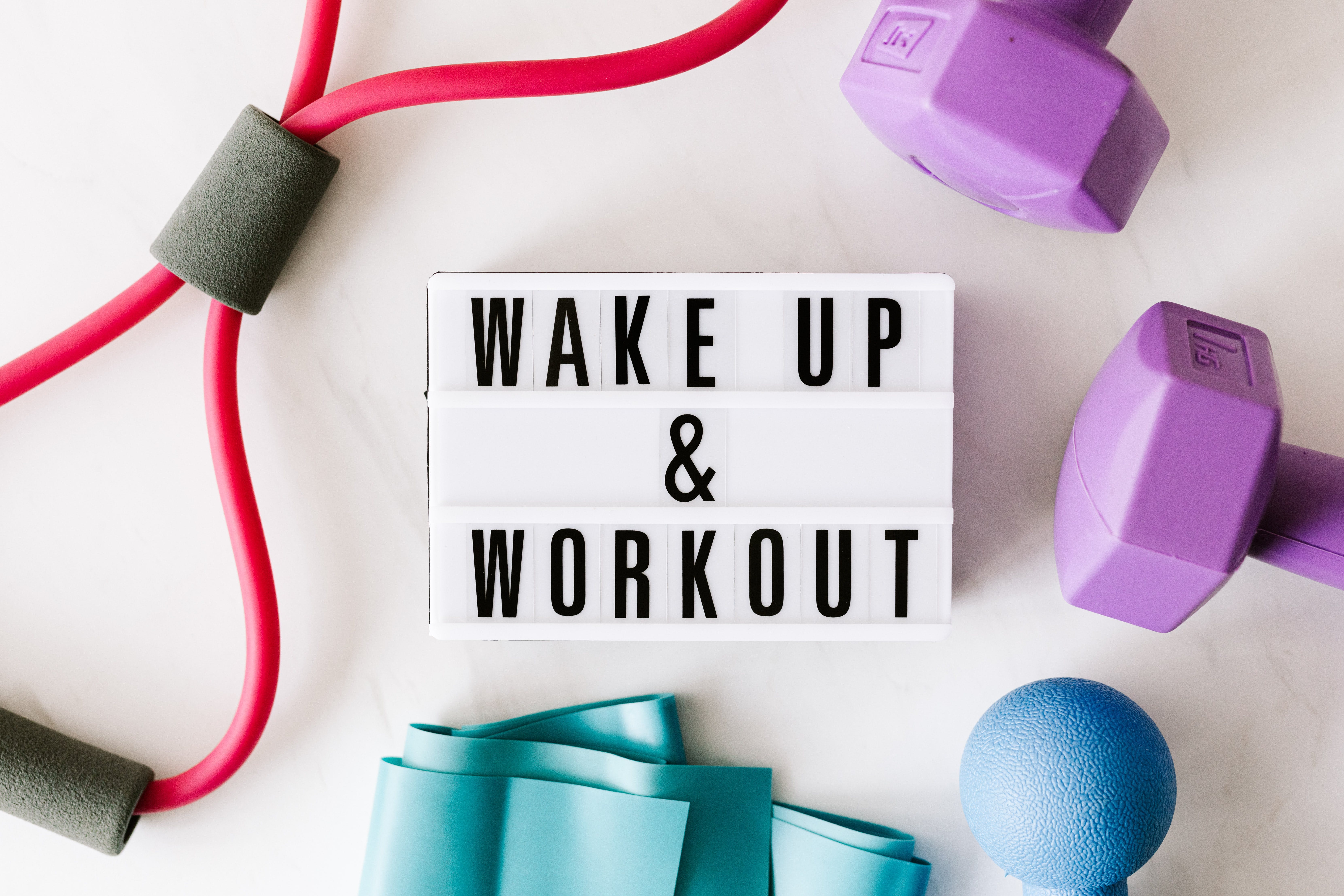
The irony is not lost on me that I sat for several hours reading a 118 page report about the benefits of regular exercise. And then I sat for several more hours to put my thoughts on paper. It seems pretty straightforward: movement is good for you. But how does it benefit me? And how much movement do I need? Which movements should I do? The overwhelm is real y’all! If you are spinning your wheels trying to figure out where to start on your fitness journey, allow me to help!

How Much Exercise Do I Need?
Most sources (CDC, Mayo Clinic, Harvard Health, etc) recommend about 150 minutes of moderate-intensity physical activity per week. However, there is not a minimum threshold that must be met before benefits occur. A single session of moderate-to-vigorous physical activity can reduce blood pressure, improve insulin sensitivity, improve sleep, and reduce anxiety symptoms! Even 10 minute episodes of physical activity count towards your total daily activity level. So even if you don’t have time to carve out a whole trip to the gym, take the stairs! Some benefits, such as disease risk reduction and improved physical function, accrue within days to weeks after consistently being more physically active.

What Type of Exercise Should I Do?
The 2018 Physical Activity Guidelines Advisory Committee Scientific Report looked at both aerobic and muscle-strengthening physical activities and determined both are beneficial. Health benefits were also seen across the board for children and adolescents, young and middle-aged adults, older adults, and those in every studied racial and ethnic group. The key, however, is consistency. Some benefits of physical activity can be achieved immediately, such as reduced feelings of anxiety, reduced blood pressure, and improvements in sleep. Other benefits, such as increased cardiorespiratory fitness, increased muscular strength, decreases in depressive symptoms, and sustained reduction in blood pressure, require a few weeks or months of participation in physical activity. An important factor to remember is to choose an activity that you find enjoyable at an intensity level that suits your fitness level.

What Are the Physical Health Benefits of Exercise?
- Enhanced Cardiovascular Health: The benefits of physical activity on cardiovascular health have been widely studied for years. Heart disease is one of the leading causes of death in the United States and a major risk factor is low fitness levels. Significant reductions in risk of cardiovascular disease occurs for those who get 150 minutes a week of moderate-intensity physical activity. (That’s only like 20 minutes a day!) However, benefits begin with even less than that! Regular exercise is a key player in maintaining a healthy heart. Active adults have lower rates of heart disease, lower blood pressure, and better cholesterol levels. Engaging in activities that elevate your heart rate, such as jogging, cycling, or swimming, helps improve cardiovascular endurance, reducing the risk of heart disease.

- Weight Management and Metabolic Disease: Cardiovascular disease and metabolic diseases (such as Type 2 diabetes) share a number of risk factors, and reducing risk of one can reduce risk for the other. In addition, cardiometabolic health and weight status are also closely related issues. Regular physical activity strongly reduces the risk of developing type 2 diabetes in people of all body sizes. Insulin sensitivity has also shown to be improved with just a single episode of physical activity. In addition, physical activity helps control blood glucose in people who already have type 2 diabetes.
- It’s not rocket science that physical activity helps people maintain a stable weight over time. It’s also not new information that exercise burns calories and reduces the risk of weight gain and the incidence of obesity. The tricky part is that people vary a great deal in how much physical activity they need to achieve and maintain a healthy weight. Thus, activity and a healthy diet must both be considered when trying to control body weight.
- Stronger Muscles and Bones: Weight-bearing and resistance exercises promotes the development of strong muscles and bones. This occurs not only in healthy adults, but in children and the elderly as well. Research shows that staying consistent with regular exercise can reduce the risk of falls and fall-related injuries for older adults and thus contributes to their ability to maintain independence. Research also shows resistance exercises improve muscle strength in persons with conditions such as stroke, MS, or spinal cord injuries.

What are the Mental Health Benefits of Exercise?
- Stress Reduction and Mood Enhancement: Depression is one of the most common mental disorders in the US and a leading cause of disability for middle-aged adults. However, regular physical activity can improve many of the symptoms experienced by people with depression! It can also reduce the risk of developing depression in children. Regular exercise can also (over a period of time) reduce the symptoms of anxiety disorders in adults. Exercise stimulates the production of endorphins, the body's natural mood lifters. It acts as a powerful stress reliever, helping to alleviate anxiety and depression.
- Enhanced Cognitive Function: Compared to inactive people, those who do greater amounts of physical activity have been shown to experience improvements in cognitive function and memory. Some may even perform better on academic tests. Physical activity also lowers the risk of developing cognitive impairments such as dementia and Alzheimer’s disease. This is the same for those with normal cognitive health as it is for those with ADHD, schizophrenia, MS, and Parkinson’s disease. It promotes the growth of new neurons and reduces the risk of cognitive decline as we age.
- Aspects of cognitive function that may be improved include memory, attention, executive function (the ability to plan and organize; monitor, inhibit, or facilitate behaviors; initiate tasks; and control emotions), and academic performance among youth.
- Better Sleep Quality: Quality sleep is essential for overall well-being and establishing a consistent exercise routine can contribute to better sleep patterns. Strong evidence shows that physical activity helps to reduce the length of time it takes to fall asleep, improve sleep efficiency (stay asleep longer), and improve sleep quality. It also can increase the time in deep sleep and reduce daytime sleepiness. In addition, the time of day one exercises does not alter those benefits. So whether you routinely hit a 5am spin class, or just barely fit it in after the kids go to bed, it is all beneficial! The key is consistency.
- Increased Energy Levels: Contrary to the misconception that exercise depletes energy, regular physical activity actually increases energy levels. It enhances stamina and endurance, allowing individuals to tackle daily tasks with vitality.

Tips for Creating a Fitness Routine You Can Stick To:
- Set Realistic Goals: Start by personalizing your goals. Motivation is a fickle thing and can dissipate quickly if you don’t set a clear WHY. Then, set achievable goals that align with your fitness level. As you progress, you can gradually challenge yourself with more ambitious targets. Start by increasing the number of minutes per session, then increase the days per week. Lastly, as your strength and stamina improve, you can increase the intensity of the exercise. Remember, many of the benefits mentioned above can be seen after just ONE episode of exercise.
- Find Activities You Enjoy: Whether it's dancing, hiking, or practicing yoga, choose activities that bring you joy! Enjoying your workouts increases the likelihood of sticking to your routine. Sumner County has a wide variety of options to fit anyone! And many locations offer your first class free or even virtual options!
- Support from Others: Everything is better with a friend! Adults are more likely to participate in physical activity when they are supported by others. This can be a buddy system for the gym, joining a walking group, a pact with a long-distance friend, or even the support of a personal trainer.
- Incorporate Variety: Keep things interesting by incorporating a mix of cardiovascular exercises, strength training, and flexibility exercises. This not only prevents boredom but also ensures a well-rounded fitness regimen.
- Prioritize Consistency Over Intensity: Consistency is key to reaping the long-term benefits of exercise. Start with manageable sessions and gradually increase intensity as your fitness improves.
Dr. Heather Champion
Contact Me



